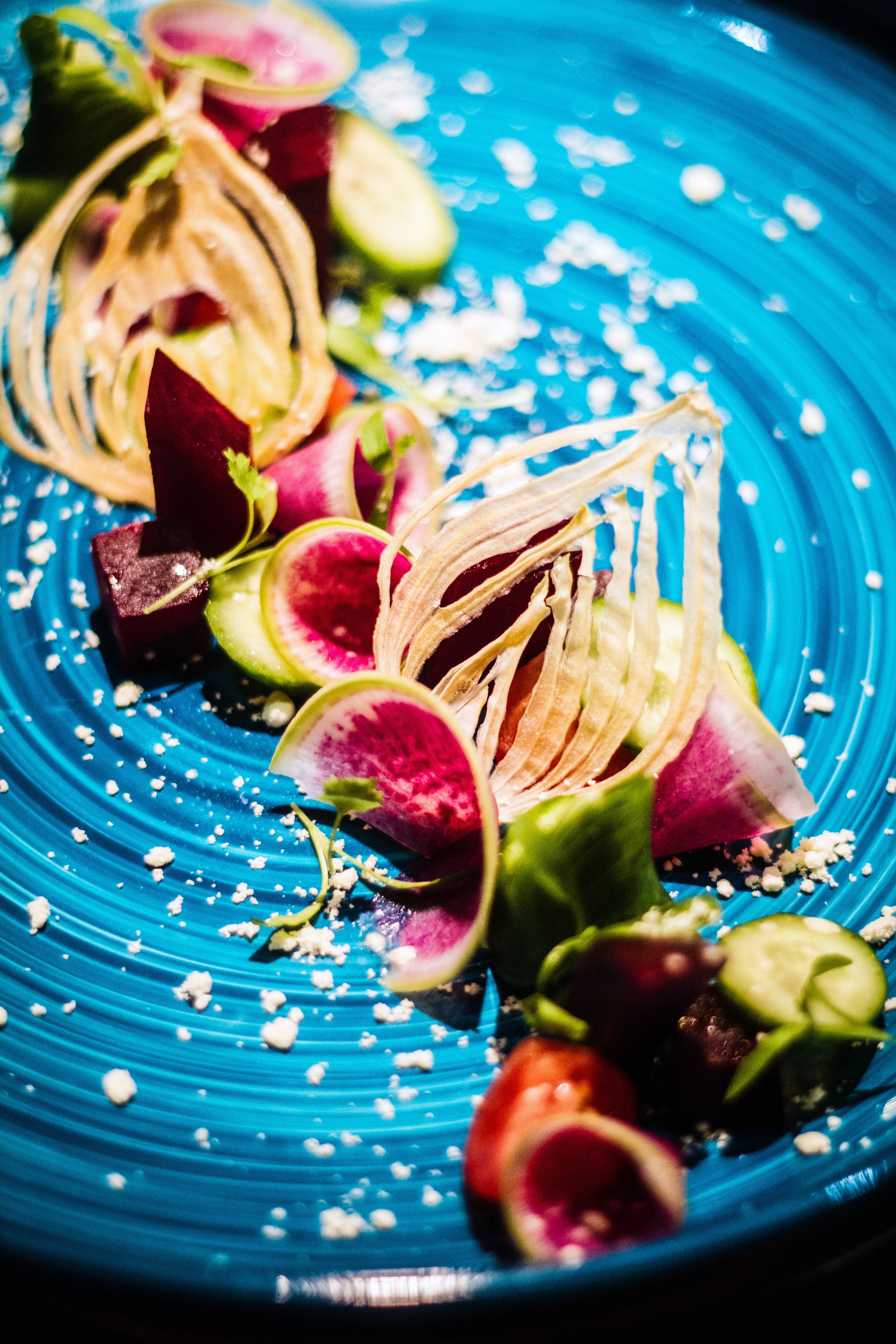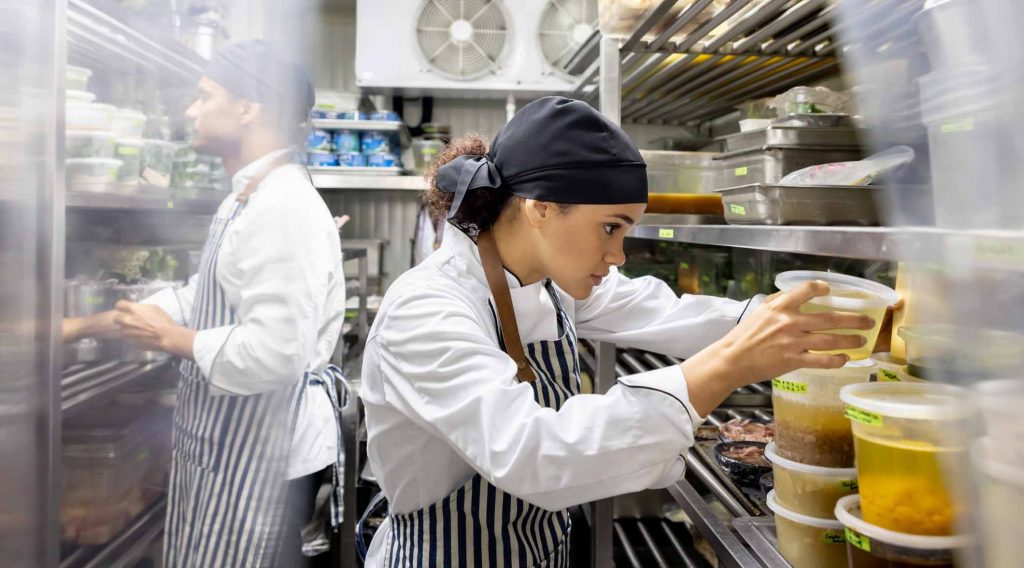
The National Restaurant Association’s What’s Hot chef survey for 2018 had its lineup of the usual suspects like ‘chef-driven’ concepts and ‘street food’, but zeroed in on a few key, newer trends like interesting herbs and new cuts of meat. The on-trend Andrew Freeman & Co. has released its picks for the foods and concepts to watch this year. Here are our picks of the top trends for 2018 based on all this data that could have the largest impact on foodservice design.
Food waste reduction
We’re super excited about the issue of food waste becoming more mainstream and the increased participation among chefs and higher-end restaurants in urban markets. The NRA What’s Hot survey listed this trend as No. 6 on its Top 25 list. Most likely, this ties in with ‘Environmental sustainability’, listed at No. 9 on the list. Andrew Freeman also pointed out “creative ways to combat and utilize food waste” as a growing trend.
Fine-casual
The growth of this niche sector continues, with fine-dining-trained chefs and restaurateurs opening smaller, fast casual outposts that serve high-end food with less formal service and more affordable prices. The proliferation of the six meal period day, as Andrew Freeman & Co. reports, seems to feed into this segment as well, with younger consumers opting to eat their meals and snacks at off-peak, less traditional time periods. Many of these fine-casual outlets have longer hours throughout the day and night.
Chicken
Rotisserie chicken seems to be gaining steam as a top trend, with the influx of Peruvian- and South-American joints infiltration urban markets. Even supermarkets are capitalizing on the fad. As such, expect a rise in rotisserie specification.
Veggie-centric
This all-encompassing trend seems to be the norm these days as consumers continue to reduce their meat consumption even more, with or without going full vegetarian or vegan. This has had an impact on tabletop, with chefs wanting to present their colorful dishes in the most artful way possible. And, as carb-heavy pastas and rice are substituted for veggie-rich cauliflower ‘rice’ and zucchini ‘spaghetti’, more chefs are using food processors and spiralizers.
Israeli cuisine
New York City alone saw the rise of about eight “modern Middle Eastern” and Israeli-forward restaurants and eateries in the past few years, from the very fine-dining to the more fast casual. As such, these places are sourcing high-quality fruits, vegetables, grains and spices, which are staples of Israeli cuisine, but also wood-fired ovens for fresh-baked Israeli bread and roasted foods.
Culinary cocktails and boxed wine
In a trend that seems to be carrying-over from last year, culinary cocktails (sometimes nicknamed kitchen cocktails) at the bar continue to showcase savory, fresh and herb-infused ingredients from the chef’s pantry. These ‘farm to shaker’ cocktails require top of the line bar tools and equipment, not to mention pretty glasses and other vessels for displaying the drinks and their colorful garnishes. Cold brew coffee makers and taps also play into this trend as bartenders continue to incorporate coffee into their cocktails.
Technology in restaurants
Andrew Freeman & Co.’s report focused heavily on how technology continues to impact restaurant design. Some foodservice institutions (namely healthcare and colleges) are using or looking into using robots for food delivery in their spaces, while some chain restaurants are testing drones for third-party delivery. The future of transactions in restaurants, thanks to more kiosks and food ‘cubbies’ mean fewer people and less labor costs. Even hotels are getting into the game, with robots for room service and expanded, healthier vending options. Some are even experimenting with voice/facial recognition and mobile check-in. Restaurants—especially the higher-end ones—are all about high-tech lighting as Instagram rules and everything needs to be camera-ready.
Interesting herbs
We’re excited about the National Restaurant Association’s point toward unique herbs that go beyond basil and parsley to include lovage, chervil, lemon balm and papalo, a boulder cilantro of sorts. With microgreens forever in style, we wouldn’t be surprised to see mini versions of these herbs used by tweezer-bearing chefs looking to spruce up their dishes.
Lesser-known steaks
Yes, we’ve covered things like offal and tougher off-cuts of meat as a trend among chefs looking to make use of whole animals, but the National Restaurant Association’s What’s Hot list pointed out the burgeoning of newer beef steaks and cuts like the shoulder tender, oyster, or spider steak as its referred to in Australia (flavorful, inside-hip cut), Vegas strip (a more marbled cut of chuck with its own licensing) and Merlot steak (round, petite tender).
Pupusas
While dumplings seemed to be everywhere in 2017, we could see the rise of the pupusa, a traditional Salvadoran or Honduran street food made of a thick corn tortilla similar to a Mexican gordita that’s stuffed with savory fillings.
Nostalgic food
It seems the likes of meatloaf, deviled eggs and wedge salads from classic steakhouses and restaurants of yore are making a comeback, while Millennials are enjoying playful dishes by chefs using retro treats like Pop Rocks and Cheetos, according to Andrew Freeman & Co.
Activated charcoal
A staple in the nutrition and natural beauty sectors, this stark black powder made from charring and steam-activated coconut is prized for its super strong detoxifying power. As a culinary piece, however, it could help add rich color and texture to pastas and baked foods in the place of squid ink.
Amelia Levin
Picture: Getty Images




